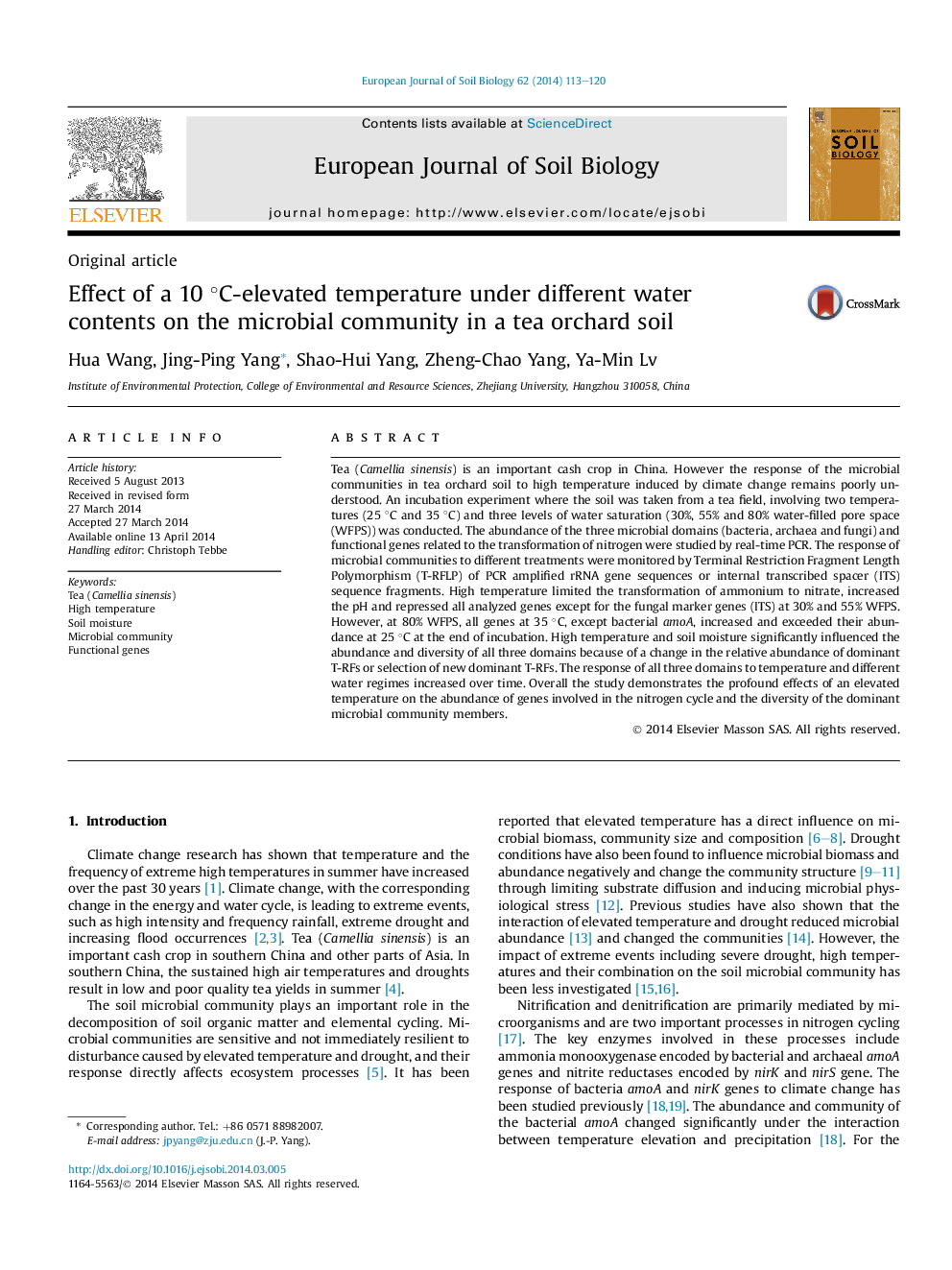| کد مقاله | کد نشریه | سال انتشار | مقاله انگلیسی | نسخه تمام متن |
|---|---|---|---|---|
| 4391832 | 1618130 | 2014 | 8 صفحه PDF | دانلود رایگان |

• Detected microbial response to 35 °C compared to 25 °C with three soil moisture.
• Transformation from ammonium to nitrate was limited at 35 °C under 30% and 55% WFPS.
• High temperature reduced gene abundance except ITS at 30% and 55% WFPS.
• High temperature increased microbial abundance except AOB at 80% WFPS finally.
• Microbial communities varied with temperature, soil moisture and incubation time.
Tea (Camellia sinensis) is an important cash crop in China. However the response of the microbial communities in tea orchard soil to high temperature induced by climate change remains poorly understood. An incubation experiment where the soil was taken from a tea field, involving two temperatures (25 °C and 35 °C) and three levels of water saturation (30%, 55% and 80% water-filled pore space (WFPS)) was conducted. The abundance of the three microbial domains (bacteria, archaea and fungi) and functional genes related to the transformation of nitrogen were studied by real-time PCR. The response of microbial communities to different treatments were monitored by Terminal Restriction Fragment Length Polymorphism (T-RFLP) of PCR amplified rRNA gene sequences or internal transcribed spacer (ITS) sequence fragments. High temperature limited the transformation of ammonium to nitrate, increased the pH and repressed all analyzed genes except for the fungal marker genes (ITS) at 30% and 55% WFPS. However, at 80% WFPS, all genes at 35 °C, except bacterial amoA, increased and exceeded their abundance at 25 °C at the end of incubation. High temperature and soil moisture significantly influenced the abundance and diversity of all three domains because of a change in the relative abundance of dominant T-RFs or selection of new dominant T-RFs. The response of all three domains to temperature and different water regimes increased over time. Overall the study demonstrates the profound effects of an elevated temperature on the abundance of genes involved in the nitrogen cycle and the diversity of the dominant microbial community members.
Journal: European Journal of Soil Biology - Volume 62, May–June 2014, Pages 113–120